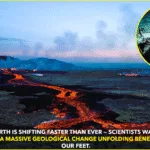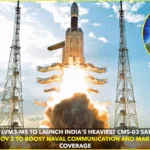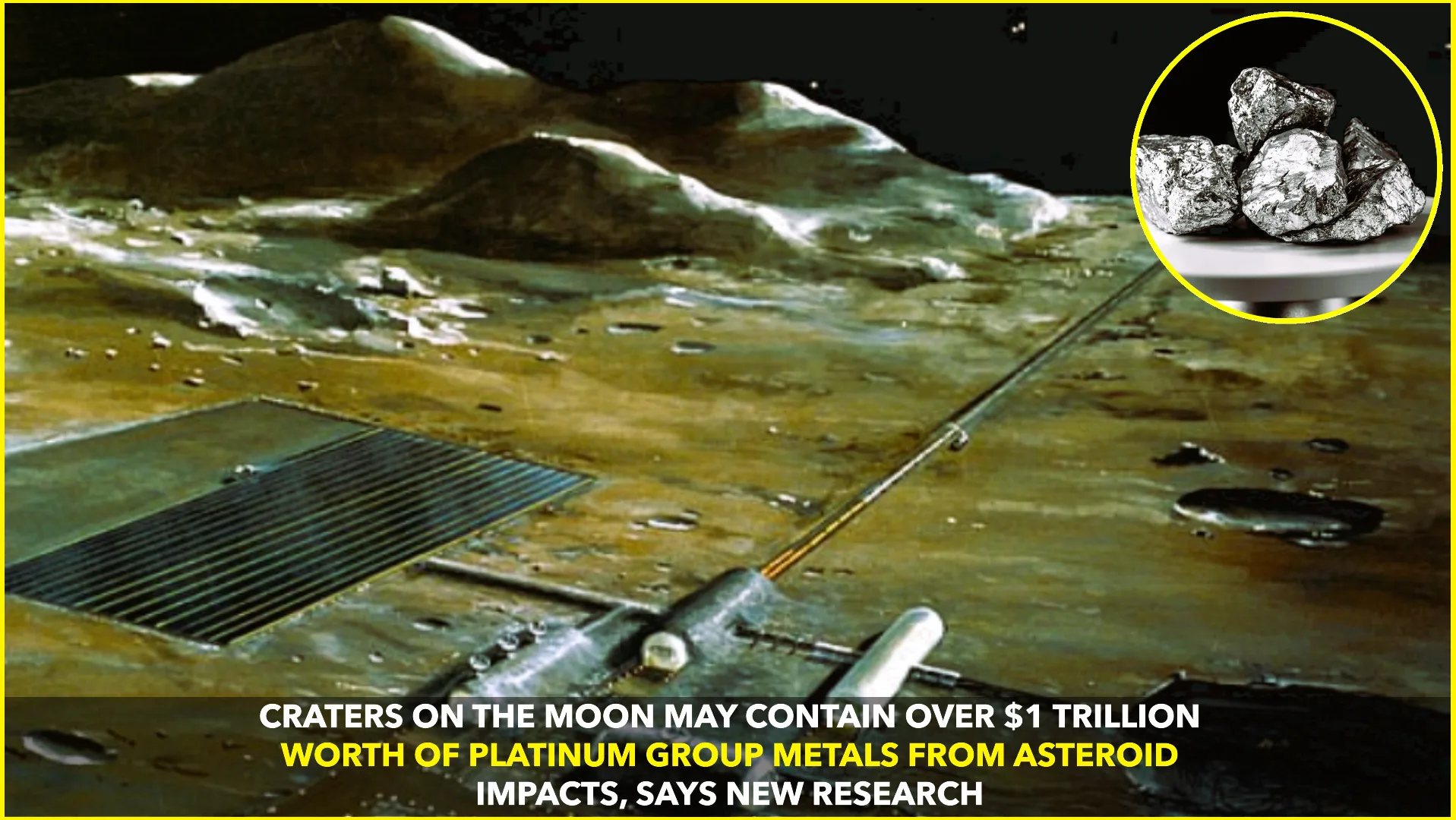A new study suggests that the Moon could be hiding a treasure trove of platinum group metals (PGMs) worth over a trillion dollars, raising hopes for future space-based mining ventures. According to the research led by independent scientist Jayanth Chennamangalam, based in Vancouver, Canada, asteroid impacts on the lunar surface may have delivered commercially significant concentrations of PGMs such as platinum, palladium, rhodium, ruthenium, iridium, and osmium.
These elements, commonly used in electronics, automotive catalytic converters, and renewable energy technologies, are rare and costly on Earth. The new findings suggest that instead of targeting individual asteroids for resource extraction — a strategy previously proposed by companies such as Planetary Resources and Deep Space Industries — lunar mining might offer a more accessible and economically viable alternative.
Asteroids as Natural Delivery Systems
Asteroids are known to contain high concentrations of PGMs. Over billions of years, many of these metallic space rocks have collided with the Moon, whose surface lacks atmospheric protection. These impacts have likely deposited rich veins of valuable materials in and around lunar craters. The team’s analysis, based on known impact rates and models of asteroid composition, estimates that the cumulative effect of such collisions could have created highly concentrated, economically recoverable deposits of PGMs.
“Because the Moon doesn’t have the geological activity that Earth does — like tectonics, erosion, and weather — the metals delivered by asteroids are likely to be relatively undisturbed and easier to locate,” said Chennamangalam in his statement to media outlets.
Unlike Earth, where valuable minerals may be buried deep within the crust or dissipated over time by natural processes, the Moon’s static surface preserves the aftermath of asteroid strikes. This could mean easier access to concentrated deposits, especially in ancient, well-mapped craters.
Commercial Viability and Legal Uncertainty
While the technical feasibility of mining the Moon remains a topic of debate, the new study argues that the relative proximity of the Moon (about 384,000 kilometers from Earth) makes it more cost-effective to target than distant asteroids, which require longer and riskier missions.
Chennamangalam and his team propose that future lunar missions could use ground-penetrating radar, autonomous drones, and AI-based mapping to identify potential resource-rich sites. Several countries and private companies, including NASA, SpaceX, Blue Origin, and ISRO, are actively developing lunar landers and rovers that could one day play a role in such exploratory missions.
However, there remains a major legal obstacle to overcome: the absence of a clear international framework for extraterrestrial resource ownership. The 1967 Outer Space Treaty, signed by over 100 countries including the US and Russia, prohibits any nation from claiming sovereignty over the Moon or other celestial bodies. It does not, however, specifically ban commercial mining by private entities, leading to differing interpretations and a legal gray area.
The U.S. has taken steps to support commercial space mining through its Commercial Space Launch Competitiveness Act (2015), which grants American companies the rights to resources they extract from space. Similarly, Luxembourg has enacted its own laws to encourage space mining ventures. Yet these laws are not universally recognized, and many experts argue that a global agreement is urgently needed before lunar mining can move from concept to reality.
Looking Ahead
With global interest in space exploration reaching new heights and the Artemis program aiming to return humans to the Moon in the coming years, the idea of harvesting resources from the lunar surface is no longer science fiction. Chennamangalam’s research adds significant weight to the argument that the Moon may be not only scientifically fascinating but also commercially rewarding.
If future missions confirm the presence of concentrated PGMs in lunar craters, the Moon could become a cornerstone of the space economy — but only if the world agrees on how to share its riches.
Sources:
- Study by Jayanth Chennamangalam (via media outlets and space science journals)
- NASA, ESA, and space law documents on lunar resource utilization
- U.S. Commercial Space Launch Competitiveness Act (2015)










